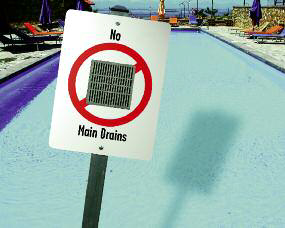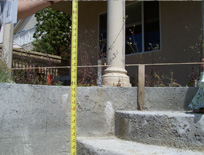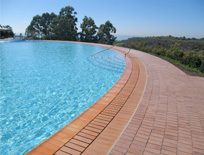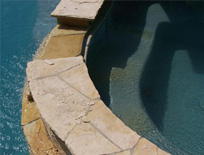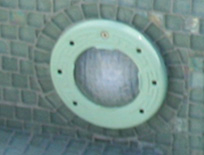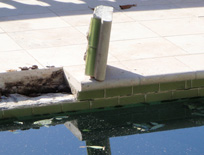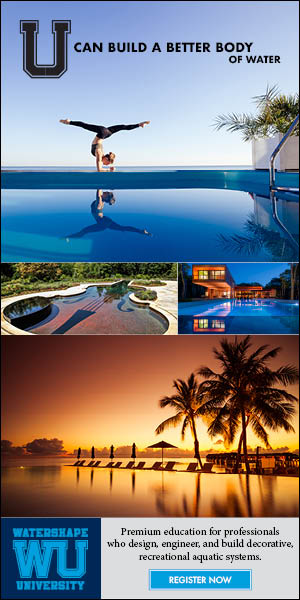Pools & Spas
Among the most gratifying of all projects are those in which designers are able to forge links between different areas of a property, creating an unfolding, choreographed experience that generates notes of anticipation along with reassuring sensations of comfort and familiarity. In our work at Root Design Company (Austin, Texas), we’ve found that water is a powerful tool in defining those sorts of connections within a property, whether it is used in bold ways, as with fountains or swimming pools, or as subtler secondary or tertiary elements, including runnels or small waterspouts. In the project depicted here, we used multiple watershapes within architectural spaces that organize those settings and bring motion and continuity to the overall space. It all ties together visually, with each path leading to intriguing destinations that serve as rewarding visual experiences for anyone who visits. As we see it, the key ingredient in this project was our client, who understood
The following is the text, somewhat altered for this audience, of a letter I’ve sent a number of health departments in the course of working on projects for our clients. There is no doubt that the recent wave of legislation, codes and standards regarding suction entrapment has caused confusion – not just in the pool and spa industry, but also among lawmakers, inspectors and contractors as well as pool and spa owners. These mandates, however well intended, have all too often been confusing or contradictory and frequently reflect neither
Let’s start this time with a key definition.In the deepest part of a typical pool, you ordinarily carve out a two-by-two-foot box and backfill it with gravel. On top of that gravel sits a valve designed to open when the water pressure outside the shell is
In the very early stages of a project, it isn’t unusual for the plot plans used for design concept/presentation purposes to be a bit off scale, sometimes by a fair amount. Many properties are difficult to map, and even in those cases where it might seem relatively simple to get things right, the fact that one person generally does the job alone isn’t
For professionals who tirelessly commit themselves to excellence in all aspects of their work, challenging projects are the butter on the bread. At Drakeley Swimming Pool Co. of Bethlehem, Conn., we truly enjoy jobs with higher-than-usual degrees of difficulty because they generally involve us with clients who have strong ideas about what they want, force us to develop solutions to unique and interesting problems and see us perform on a level that invariably makes us proud. As we see it, these jobs are the reward we get for years of focusing on doing our absolute best. True, these projects can be tough, but we’ve found that by sticking to our “quality without compromise” philosophy, we’ve managed to thrive through tough times and have always earned our share of interesting commissions. It’s proof of the old adage that good things follow hard work, even in a soft economy. That was certainly
It's a fact: Watershapes built with concrete need to be waterproofed in some way or it is almost certain that the water their shells are supposed to contain will find a way to escape. While some observe that concrete applied by an expert at high levels of compressive strength will
Water passing from one level to another will always be a popular feature in watershapes — from the familiar spillways from spas into pools to the intricate flows found in many fountains, reflecting pools, runnels, rills and even koi ponds (to name a few possibilities). Depending on the application, these features might
With vast experience in both the residential and commercial markets, Kevin Ruddy is one of the watershaping industry’s foremost experts on the design and construction of indoor swimming pools and their surrounding environments. Here, in this first of two features covering a complicated residential project, he discusses the painstaking process of designing a pool and the systems that integrate it with the surrounding structure. It seems counterintuitive, but indoor swimming pool environments are wholly and entirely distinct from their outdoor cousins. The differences are mostly contained in the fact that, indoors, the designer needs to consider not only the pool and its hydraulic performance, but also the enclosure and the air-handling and dehumidification systems that makes these spaces comfortable and enjoyable for clients and their guests. Through years of designing and installing indoor pools, we at Omega Pool Structures (Toms River, N.J.) have learned – sometimes the hard way – what works and what doesn’t. Now, supported by more than two decades’ experience, we’ve
Some people say there are unattractive things we just can't avoid in installing our watershapes, including the visual intrusions provided by junction boxes, drain covers, skimmer lids, deck drains, pool cover key switches, spa-side remotes and all sorts of other things I refer to as "architectural uglies." Personally (and I know I'm not alone), I've never been satisfied
In pool-remodeling work, it's very common to raise a bond beam to meet the needs of a new deck or edge detail — or simply to make the pool level again. As ordinary a step as this may seem, it can be trickier than you might think because, in applying











